Programming Attention
The Power of Keystone Habits with Roam Research
How to use Roam Research as your keystone habit to regularly revisit writing that is important to you, using the ∆ feature in Roam.
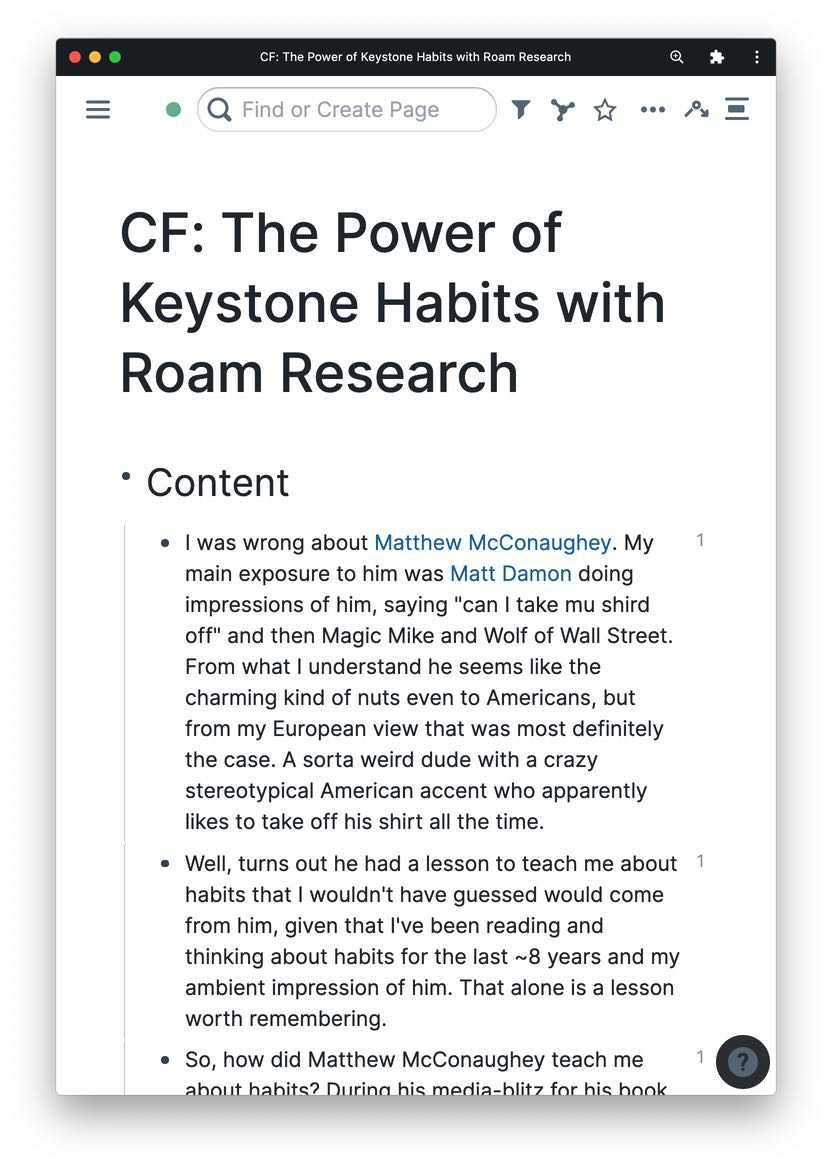
I was wrong about Matthew McConaughey. My main exposure to him was Matt Damon doing impressions of him, saying "can I take mu shird off" and then Magic Mike and Wolf of Wall Street. From what I understand he seems like the charming kind of nuts even to Americans, but from my European view that was most definitely the case. A sorta weird dude with a crazy stereotypical American accent who apparently likes to take off his shirt all the time.
Well, turns out he had a lesson to teach me about habits that I wouldn't have guessed would come from him, given that I've been reading and thinking about habits for the last ~8 years and my ambient impression of him. That alone is a lesson worth remembering.
So, how did Matthew McConaughey teach me about habits? During his media-blitz for his book Greenlights, he appeared on The Tim Ferriss Show and Hot Ones. These two interviews expanded my understanding of him and his work considerably - the Texan accent is still very stereotypically American for my ears, but I learned how much about his work I had been missing out on.
I also learned that one of the most important books in his life was "The Greatest Salesman in the World". He tells the story of how he would leave parties to go home and read it or bring it everywhere. The main conceit of the book is that it takes ten months to read - every chapter is read three times a day, for 30 days, before you advance to the next chapter.
That sounded interesting, so I decided to check out the book and do as he did if I liked it. Three weeks in I'm still reading the first chapter every day, and it has never been this easy to stick to a habit for this long for me. Why is that?
Because of the power of keystone habits.
The Power of Keystone Habits
Keystone Habits are habits that you use to make it easier to do other habits because you perform them regularly already and all you have to do is chain a new habit on at the end. A popular example is brushing your teeth in the morning - you do that already, so if you want to remember to take your meds or fish oil or whatever, do it immediately after and it's going to be much easier to stick to it than if you did it randomly.
For something like reading a chapter in a book, though, I've always found it incredibly hard to find a good keystone habit. In fact, I've failed at building this type of habit so often that I lost count.
What made it work this time was that I have the perfect keystone habit in place for this type of thing: opening Roam Research every morning. Because I do that literally every morning, all I had to do was find a way to attach reading the chapters to opening Roam.
The way I did this was through Roams ∆ feature, which I've written about in the context of spaced repetition before here. Basically, it lets you revisit things in your database in regular time intervals, from daily to dynamically increasing periods like one day then three days then five days in the future.
By creating a block in Roam that linked to the full contents of the chapter that I had copied into Roam, all I had to do was click one button to make sure I'd see it again the next day - that was it! And by keeping the contents of the chapter as block references, I could also write things that came to mind as I was reading and I could watch my thinking evolve over time. But that goes into thinking about "programming attention", which I'll get to in more depth another time.
For now, here's a quick demo of how this actually looks like in my Roam database to help you set this up for yourself.
First, create a page for the book you want to read every day. This could be The Greatest Salesman in the World, but the Bible, the Quran or your favorite collection of poems are equally great candidates - whatever you want to revisit regularly. Then, add the chapter as a bullet, and indent the contents under it, like this:

Now, on your daily page, create a bullet that references the chapter block.
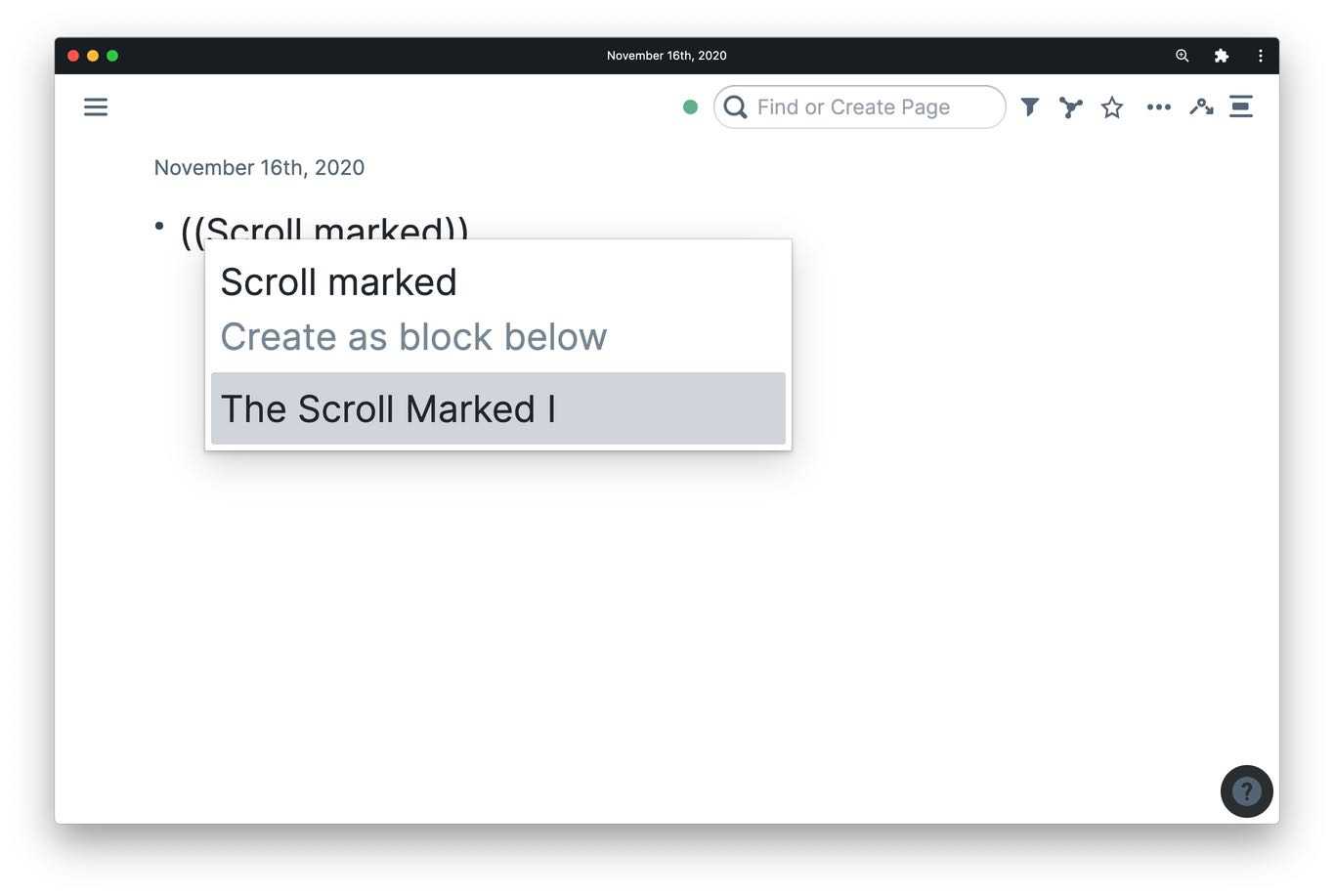
Then, click on the block reference of the chapter and go to "apply children > as references". This will reference the content of the chapter, paragraph by paragraph, below. You do this every day Roam shows you the chapter reference.
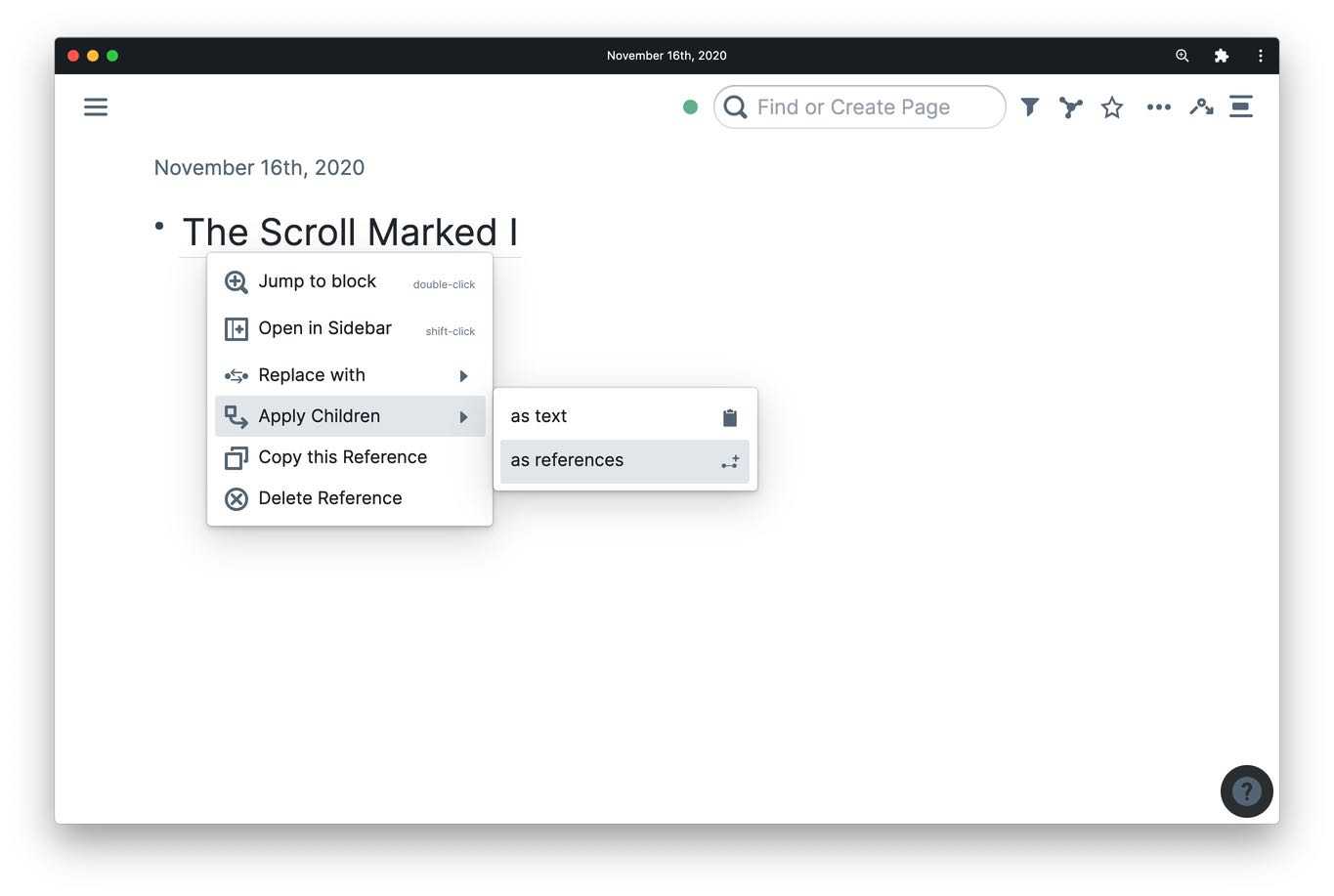
Why do you want this, instead of the "raw" text? Because now, if you record your thoughts on a given paragraph, you will see that on the paragraphs block references. That lets you track your thinking on this paragraph over time, without any more effort on your part. Magical, once you've done it.

Now, you and add the ∆ function by hitting Alt-Enter. This will immediately move the block to the next day and leave a reference in its place.
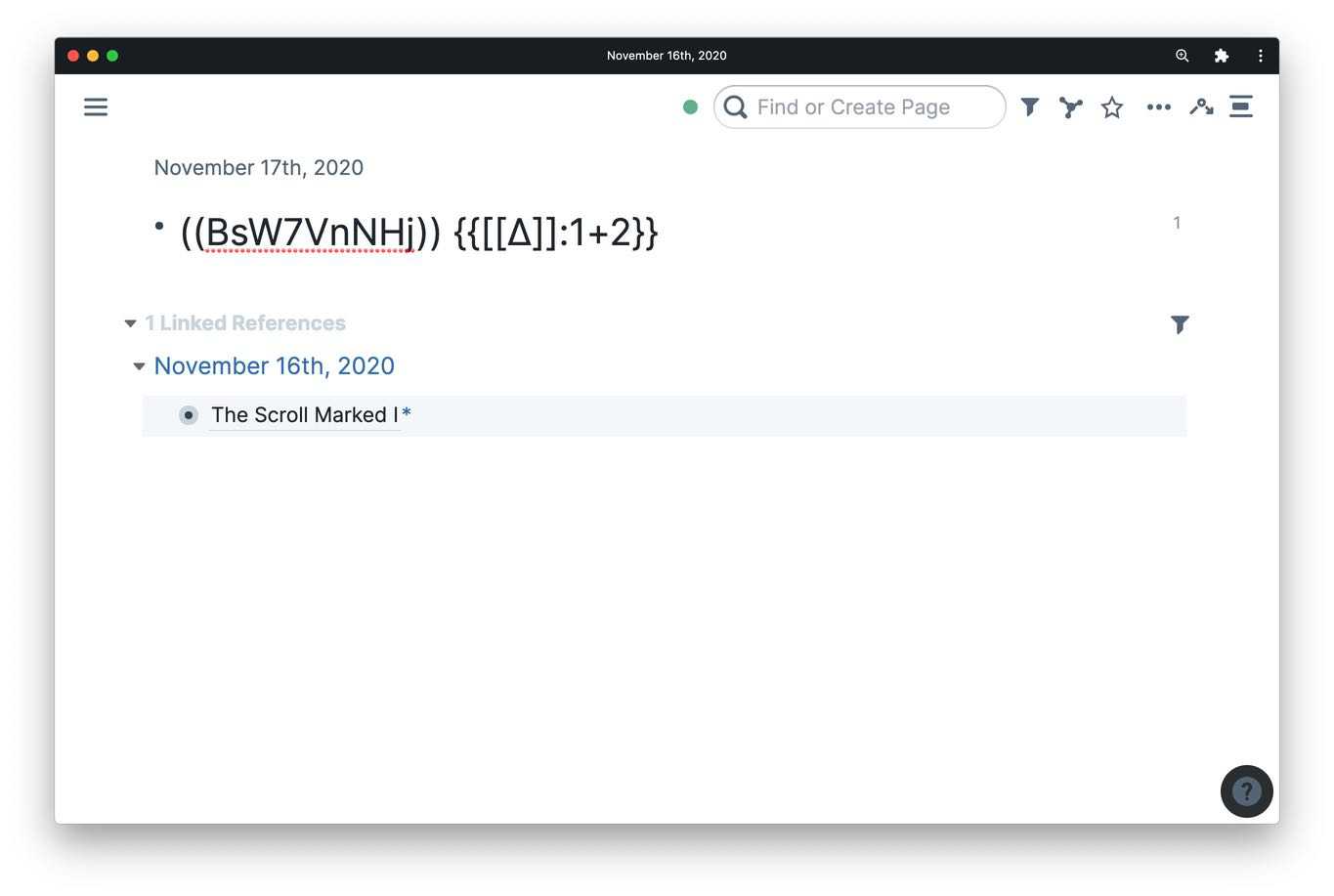
Now, one last thing. When we hit Alt-Enter, the chapter reference was "sent" to the next day. You can go to it by clicking the little * reference link it left in its place. On that future reference, when you click into it, you see that the ∆ feature looks like {{!1!}} under the hood. What this means is that every time you click the ∆ button, the time interval increases by two days. So first you see it the next day, then three days after, then five, and so on. If you want to see the chapter in regular intervals, like every day, you have to edit this to {{!1!}}. For every two days, you'd do {{!2!}} and so on.
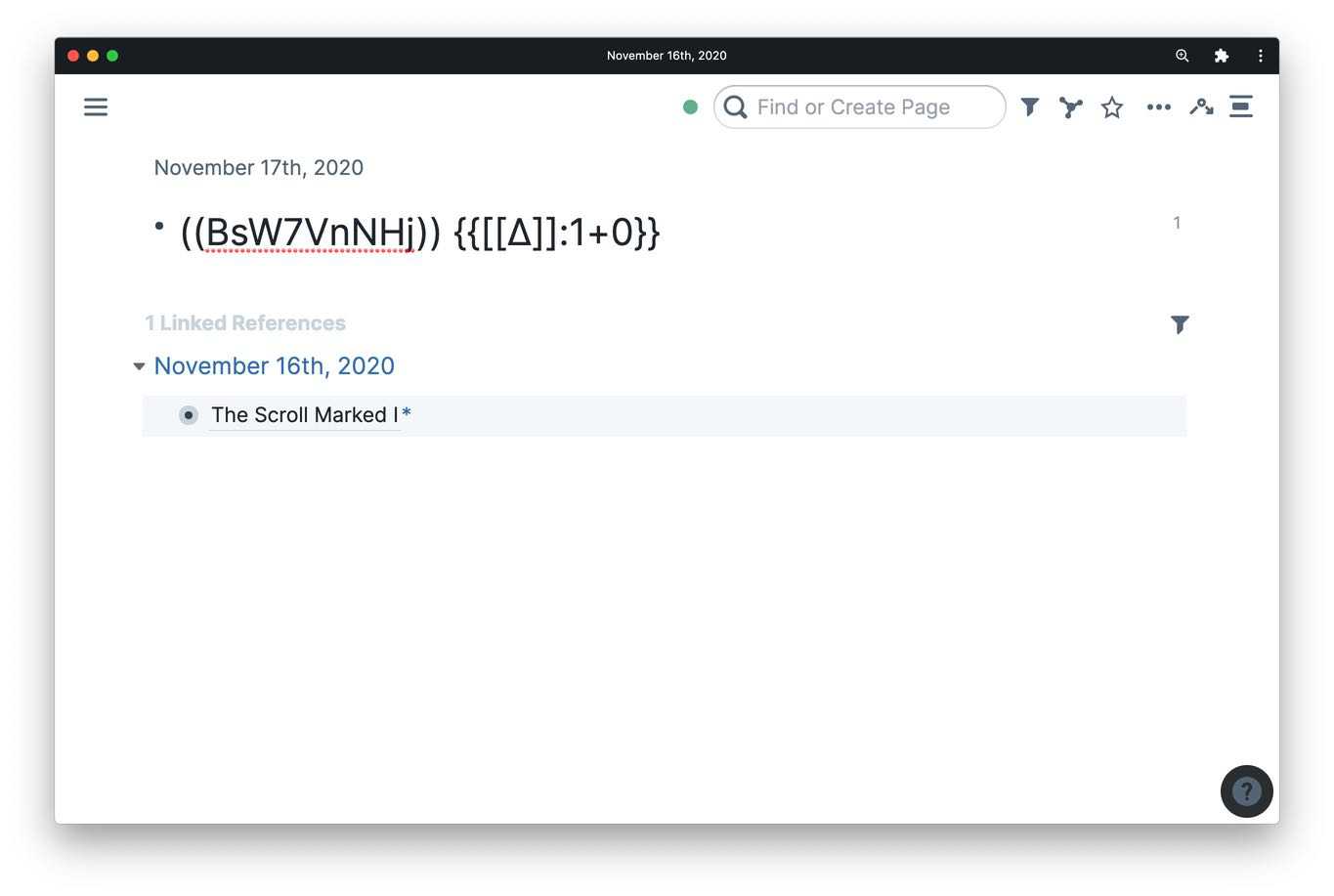
And that's it! Now you can revisit your favorite writing, or the things you want to think about regularly without any effort. The keystone habit of opening Roam is all you need - Roam and its ∆ feature take care of the rest.
Related Topics
Join the Cortex Futura Newsletter
Subscribe below to receive free weekly emails with my best new content, or follow me on Twitter or YouTube.
Join and receive my best ideas on algorithms of thought, learning, and Roam Research
